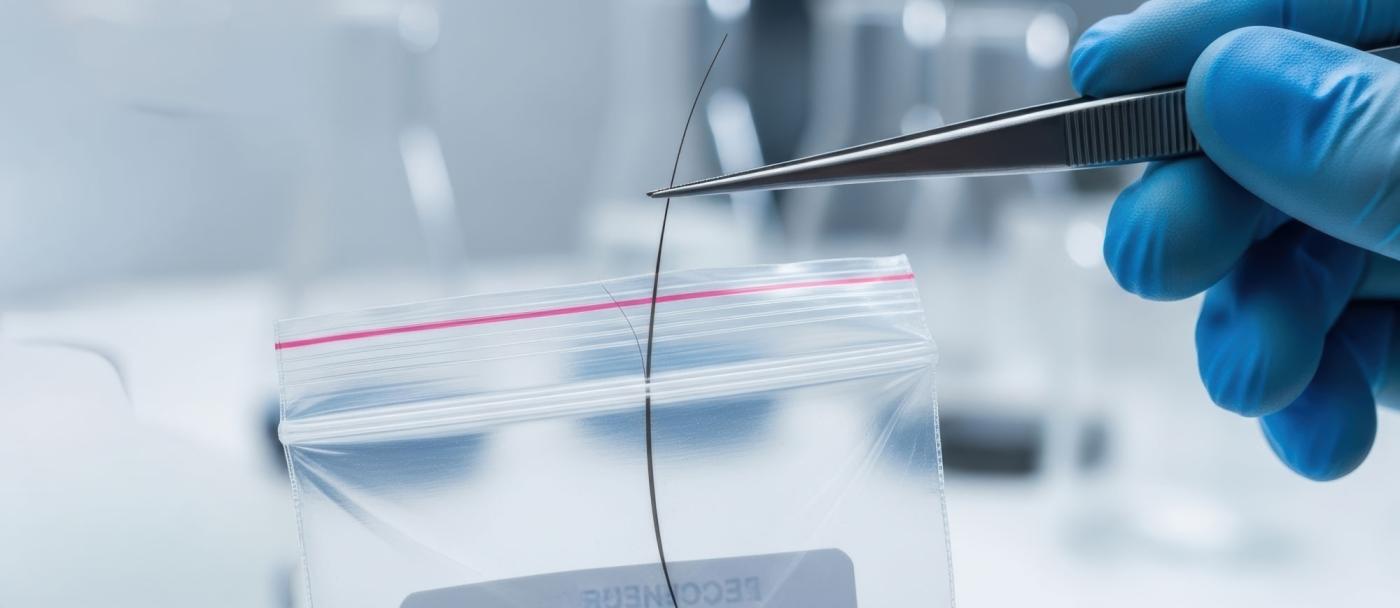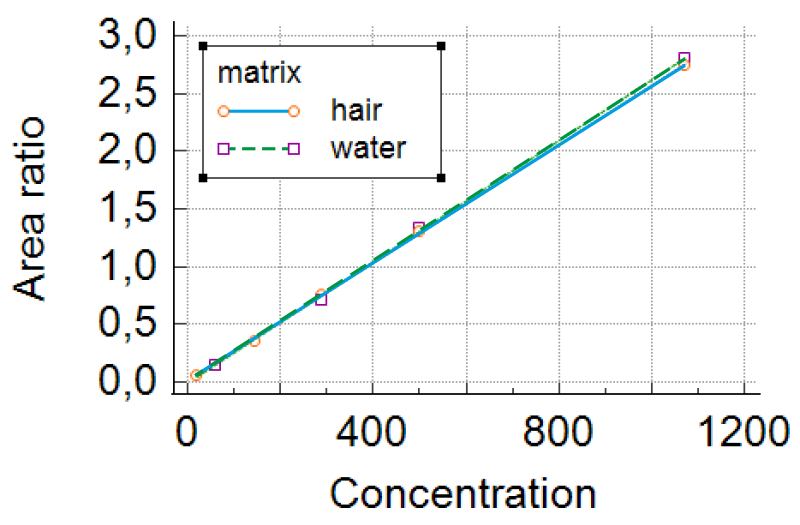Drugs of abuse in hair
A straightforward chromatographic method using the MassTox® kit from Chromsystems
Delphine Cappelle, Evi van den Steen, Nele Pincé, Lisbeth Patteet
Algemeen Medisch Laboratorium, Emiel Vloorsstraat 9, B2020 Antwerp, Belgium


Background
Hair analysis offers a valuable, complementary approach to blood and urine testing due to its extended window of detection, spanning weeks to months. This study describes the development and validation of a liquid chromatography-tandem mass spectrometry (LC-MS/MS) method for the simultaneous detection of 26 drugs of abuse and their metabolites in hair. The targeted substances include amphetamines (amphetamine, methamphetamine, MDA, MDEA, MDMA, and mephedrone), opiates (codeine, dihydrocodeine, fentanyl, hydrocodone, hydromorphone, 6-MAM, morphine, tilidine, tramadol, nortramadol, oxycodone, and oxymorphone), methadone and its metabolite EDDP, ketamine and norketamine, as well as cocaine and its metabolites (cocaine, benzoylecgonine, norcocaine, and cocaethylene).
Methods
A streamlined sample preparation was designed to reduce costs and facilitate routine laboratory application. Hair samples were first decontaminated and pulverized into powder. An extraction solvent was then added to 20 mg of hair, followed by overnight extraction. After centrifugation, samples were filtered using filter vials and injected into the LC-MS/MS system. Calibrators and controls from the MassTox® Drugs of Abuse Kit (Chromsystems) for urine, along with controls from Arvecon in authentic hair samples, were employed. Chromatographic and mass spectrometric parameters, including column type, mobile phase, gradient and multiple reaction monitoring transitions, were optimized for performance.
Results
Validation was conducted following ICH M10 guidelines, assessing specificity, limit of quantification (LOQ), linearity, accuracy, precision, and carry-over. Calibration curves in authentic hair and water were compared, with LOQs ranging from 3.2 to 36 pg/mg, depending on the analyte. The method's reliability was confirmed through successful proficiency test participation.
Comparison of the calibration curves in water and hair for benzoylecgonine


Conclusion
Given the frequent co-use of drugs of abuse, multi-analyte methods capable of detecting multiple substances and their metabolites in a single run are of significant importance. For routine laboratories, simplicity and reliability are essential. In this context, the use of calibrators and controls encompassing a broad range of drugs of abuse is crucial.
Ordering Information
| Order No. | Product |
| 96040 | 6PLUS1® Multilevel Urine Calibrator Set Drugs of Abuse Testing |
| 0410/0420/0430 | MassCheck® Drugs of Abuse Testing Urine Control Sets |
References
Cappelle D, et al. A straightforward, validated liquid chromatography coupled to tandem mass spectrometry method for the simultaneous detection of nine drugs of abuse and their metabolites in hair and nails. Analytica Chimica Acta 2017 (960): 101-109
EMA. ICH M10 on bioanalytical method validation - Scientific guideline. 2023, Assessed May 2025:
https://www.ema.europa.eu/en/ich-m10-bioanalyticalmethod-validation-scientific-guideline
SoHT. Consensus on Drugs of Abuse Testing in Hair. 2021, Assessed May 2025:
https://www.soht.org/consensus
Important notice:
The kit 96000 MassTox® Drugs of Abuse Testing in Urine is not designed for use with matrices other than urine, the intended use is urine as the only approved matrix. Please refer to the instruction manual and the product information leaflets of the calibrators and controls for detailed information before use.
The MassTox® Drugs of Abuse assay (96000) is intended solely for use with urine matrices. Testing samples of any other matrix is not covered by the intended purpose of the product. Users are therefore responsible for validating all performance characteristics when applying the product outside the specified purpose.
